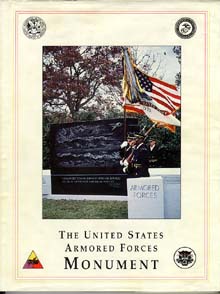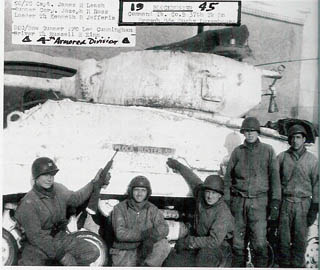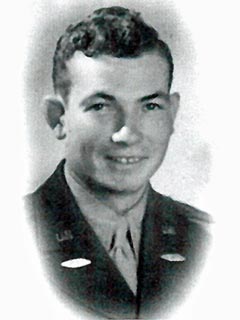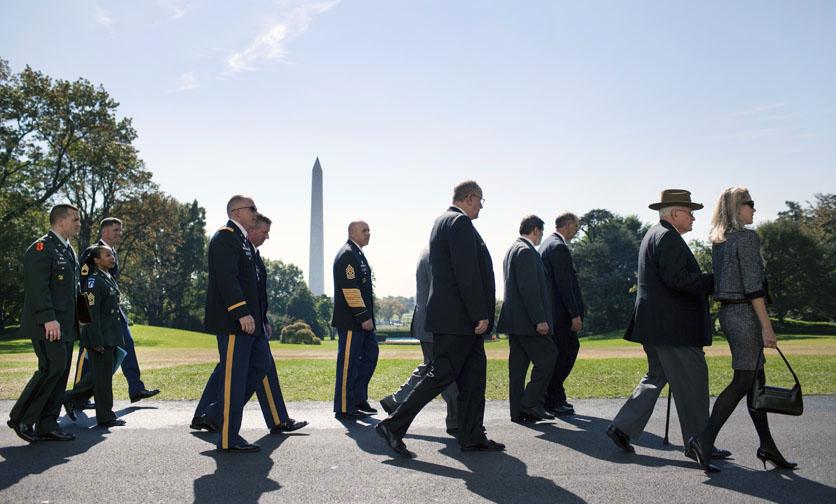|
Colonel James H. Leach -
"The sweetest man who ever lived,"
Marion Leach, 2007
Colonel James H. Leach was born in Houston, TX on April
7, 1922. He began US Army service when he joined the Texas National Guard
on June 19, 1938 at the age of 16.
When Gen. Patton began his summer dash across France in
1944, Jimmie Leach was commander of Company B, 37th Tank Battalion, 4th Armored
Division, serving under the legendary Lt. Col Creighton Abrams. He had
trained for four years as a tanker. He was uniquely prepared.
Jimmie was wounded five times in Europe, received the
Distinguished Service Cross for his heroism at Bigonville on Dec 24, 1944 and
three days later he captured and guarded the entry of the 37th into Bastogne in
relief of the 101st Airborne.
After WWII, Jimmie served in Korea on the island of
Cheju, moderating the angry wrath among island natives, off-island Koreans and
returning Koreans who had served in the hated Japanese Army.
He married Marion Heirs Floyd in 1951 and spent four years in
Germany guarding the Fulda Pass against the seemingly inevitable roll of Russian
tanks west into the Rhineland.
He assumed Armored Brigade Command as a Colonel in
the late 1960's, was assigned to Vietnam as senior advisor with the 5th ARVN division,
then, in 1969 assumed command of the 11th Armored Cavalry, replacing George
Patton IV. His aggressive leadership of the 11th is still remembered with
awesome respect by his subordinates and his peers. For the second time, in
his second war he heard the report that, "Jimmie Leach is the bravest man I ever
knew."
Jimmie Leach led the Army's Armor Branch with skill and
compassion in the early 1970's, managing the portfolios of some 6000 Army officers.
Gen Fred Franks and the current Secretary of the Department of Veterans
Affairs, Gen Eric Shinseki, report that Jimmie was responsible for their very
careers as he fought to keep these future General Officers in the Army although
each had lost a limb to wounds in Vietnam.
His defense of one young officer earned him the enmity
of Gen William Westmoreland and he was passed over for promotion as General
Officer. His son describes the scene at his home, with great friend, Gen
Creighton Abrams on hand offering support, but not interfering with this final
decision, as a wake.
Jimmie Leach retired from the Army and worked for
Teledyne for 13 years from 1972-1985. He kept his service to the Army
paramount and carried out the legislative and financial work leading to the
United States Armored Forces Monument near Arlington National Cemetery.

Jimmie Leach now lives in South Carolina where, over
the last twenty-plus years he has supported the causes of soldiers and
soldiering with unflagging zeal. He has visited the battlefields of France
and the Ardennes more than ten times, placing monuments and memorials to the men
who came there with him - and never came home. He has made peace with his
enemies in Germany - and Vietnam and traveled through both South and North
Vietnam to relook at the places and events there.
Jimmie works hard still to effect the expansion of the
Beaufort National Cemetery in Beaufort, SC, a cemetery established under
President Lincoln whose growth is threatened by neighborhood encroachment.
In 2006, Jimmie Leach spoke at the James H Leach
ReadinessCenter, a new SC National Guard facility built with funds wrested
from Congress through Jimmie's unremitting pressure on the late Sen. Strom
Thurmond. He reminded the local Guardsmen, who were on their way to
Afghanistan, that they continued a proud National Guard tradition of more than
two centuries, to which he had been attached for nearly 70 years. And his
message was clear: soldiers must train for war and never become complacent
with the present situation.
Jimmie Leach and I have spent hundreds of hours
recording his story. In September 2007 I was with him in the Galt Hotel in
Louisville when a middle aged man approached me and said, "Is that Col. Leach?"
I said yes and he said to Jimmie, "I want to thank you for saving my life in
Vietnam."
His story will unfold in time across this special
place.
Col. James H Leach died at 87 on Dec. 17, 2009.
He was driving his car near his home in South Carolina when he suffered a heart
attack. He was with us for 32031 days. Very few of them were wasted.
jimmieleach.us.
Matt Hermes
Copyright 2010 Matthew E Hermes
|
Tanker Leach and the Battle of the Bulge
(An excerpt from Tanker Jimmie Leach. In this brief
segment Jimmie Leach describes the marshalling the 37th Tank Battalion
under Lt. Col Creighton Abrams and the icy winter dash out of Germany to relieve
and defend Bastogne.)
"Ken Burns got the sounds all wrong in "The War." Our 50 Cal
machine guns went rat-a-tat just like he had it. But the German machine guns, they went brrrp,
like canvas ripping."
-Jimmie Leach
N o man held the Europe of 1944 in his hands. Europe in its sixth year of war
was a killing place across the continent: in the brutal battles in Russia with
no prisoner safe, in gas camps in Poland and Germany, in muddy, violent, stalemated Italy, in
the air along the newspaper arrows from England to the Ruhr and from Africa and
Italy to the Ploesti oilfields. No man held sway in all this; no man controlled
the daily misery and death, no man could predict its outcome. Only one man could
stop the war but Hitler would not stop the war and selected instead to hurl the
remnants of Germanyís manhood to the west once again to Antwerp and the Sea. So
he brought new blood to the December snow of the Ardennes Forest and to little
French and Belgian and Luxembourg villages in a wide, brutal penetration. One
million soldiers met on that ground in the 40 days of the Battle of the Bulge
and it took 200,000 killed, missing or wounded to decide the campaign and close
the bulge. Hundreds of trucks hauled out the frozen, contorted bodies of the
19,000 American dead.
Capt. Jimmie Leach was one of the million that winter and he became one of
the 200,000 casualties as he took his fourth, fifth and sixth combat wounds
during the campaign. He is one in a million now in 2009; just about the last
tank commander who can document the Battle of the Bulge and its decisive events, the
relief and support of the surrounded garrison at Bastogne on Dec 26, 1944. No
single story is THE story of the immense and deadly campaign, yet in the drama
and detail of tanker Leachís shared leadership we find imbedded the spirit and
heroism, the drudge and the drear of the entirety of this seminal event.
Capt. Leachís Battle of the Bulge starts with diarrhea. "After Singling, the
37th went back to Mittersheim, 20 miles back behind the lines and
assembled there. But our Division medical center was at Dieuze. When we got to
Mittersheim, the Doctor, Scotti, sent me back to the medical center at Dieuze to
get some rest because I had been wounded in the butt at Singling and I had a
terrible case of diarrhea and we had to get rid of the diarrhea." The Division
hospital was a long way behind the lines and the winter travel in the open
Jeep was but another inconvenience for the fatigued officer. It was a cold stone
place with the corpsmen and nurses doing double duty and in their spare time
foraging for wood to keep the place warm. "Typical place," Jimmie said, "All
male, male nurses, corpsmen." Jimmie was still suffering from the infections
caused by his first wound, his calf wound in the Hedgerows in July. That shell
fragment had imbedded clothing from his dirty pants into his leg and the
infection, despite repeated doses of sulfa, was still open and weeping. "Well
while I was there they put hot soaps on the wound and got the leg squared away
and gave me a lot of paregoric to stop the BMs"
Jimmie Leach left Mittersheim on the 9th of December, leaving the
37th Tank Battalion in a period of respite from war but not from
training. The Division was reconfigured and the 37th was in the
Reserve Command, now, CCR under command of Col. Blanchard. Gen. Patton
stopped by but more importantly, a new pair of socks would be issued for each
dirty pair turned in. And Lt. Marston had a lead on getting some steel wool to
clean the cooking pots and mess kits. There were showers and a clean underwear
exchange for dirty ones at the showers (if the soldiers wanted them, reads the
Battalion journal). And movies at night and firing range training by day with
the reminder from Lt. Col. Creighton Abrams that the training, even for these
men who were seasoned in the funnel of warfare would lose their edge (in the
Zone we might call it now), should training be deferred for comfort.
Col. Abrams said Patton told him they would be in reserve for a time until
the next breakthrough
But on Dec. 14th, Gen. Gaffey ordered Col. Abrams to place Co. A
37th under the command of the 78h Div. at Achen, some 15
miles north of Mittersheim. Their tank Battalion Ė the 761st Ė was
said to have all its gear in maintenance and to be not combat ready. Everyone
knew the 761st was the black Battalion and the officers and men on
the ground had the opinion that they were not holding their own as an effective
force. Co. A rolled to Achen on the 15th.
The standard equipment for a tank battalion was more than 50 medium tanks Ė
17 for each of the three Companies. The 37th Battalion could muster
only 25 Shermanís during its pause at Mittersheim along with 13 light tanks and
the normal supporting vehicles.
The 345th Regiment moved to attack on the 16th a hill near Etting. A Company was to support with direct fire; little support was needed.
They moved forward and A Company was the first of the battalionís units to enter
the Saar, still considered part of Germany.

Capt. Jimmie Leach (l) with tank crew of
Blockbuster 3,
Brouch,
Grand Duchy of Luxembourg, Jan., 1945.
Next left,
Corporal Joseph M. Ross (Gunner) later KIA, Technician 4th Grade Kenneth B.
Jefferies (Loader/Radio technician), PFC Lee Cunningham (Bow Gunner), Technician
4th Grade Russell E. Zynn (Driver)
On the 16th, Capt. Bob Cook was acting as the Co B commander while
Jimmie Leach healed. That morning the remainder of the Battalion went on alert
and at 3PM Col. Abrams radioed his Exec, Maj Ed Bautz that the Battalion, less
the A Company should move out. By 6PM they were assembled a half mile north of
Oermingen and would move forward again at 7AM on the 17th.
That day as the 37th moved through Etting, C Company was assigned
to replace A Company there and the Battalion moved on, further and further from
Capt. Leach. B Company, still under the command of Lt. Cook, was attached to the
345th Infantry. But Capt. Jimmie Leach had been released from the
captivity of the secure hospital at Dieuze and was in a Jeep burning up the roads
to reach his 37th Tank Battalion Company that had gotten many miles
away from him.
While 22 year-old Capt. Leach rode east, it was a bad day on the ground for
the 37th. Lt Charlie Walters and the depleted Company A joined the
346th Inf. Regiment to take an occupied hilltop a few miles east of
Achen. But Lt. Walters was seriously wounded and Lt. John Whitehill, who
replaced him, reported engaging six Tiger tanks as part of that days battle. At
dusk the 346th Regiment was relieved by the 345th and A
Company stayed with the 345th. A Company resupplied itself by sending
tanks back to Service Company trucks. Usually the trucks come to the tanks but
it was rough country and the trucks couldnít get to the front. So the tanks left
the front unprotected and went back and carried ammunition and supplies back on
the back of the tanks.
To the north, the German assault through the Ardennes had begun to bulge to
the west. It would be more than two days before the 37th Battalion
would learn that, over their left shoulder, there were hundreds of thousands of
Germans cutting their way west.
In the darkness, around 5:30PM on Dec 17th Capt. Jimmie Leach
caught up with B Company and retrieved command from Bob Cook. On the 18th,
he and his tanks were handed off to the 347th Infantry Regiment and
took four towns, including Walsheim and Gersheim that day.
"But I had gone from the battalion command
post in a light tank that the Battalion had loaned me for the purpose and then
met the Regimental commanding officer who blessed us out before we even fought,"
Jimmie Leach said. "Soon we received artillery and mortar fire. I had about six
guys wounded and one killed in one of these villages. I got them into the town
(by tank) but I walked ahead. One of these villages was all blocked up with
abates and mines and I left Bob Cook to shoot up the stuff and join me and I
went forward on foot as the Company Commander, no radio, we had no hand radio,
with the infantry. Cook was bringing up my company. And my tank, I guess
Jeffries was commanding it, my loader, and on the way into this area a long
range anti tank or tank grenade hit just happened to hit it and Drew was wounded
and my tank was knocked out."
When Capt. Leach learned of the Battle of the Bulge he was attached to the
345th Inf Reg, 78th Div. "My Battalion had relieved the 761st Black
Tank Battalion which the 78th Div had no faith in. The Regimental
commander I reported to said if you're no better than those oh, he swore, black
god damn tank battalion here you can take your tanks now and go. I donít want
you, I want people who can fight and wonít give me excuses why you canít fight.
Well I was impressed by him."
"Then on the 19th, Bautz called me and said we got to go to
the Battle of the Bulge." It was that critical day that Gen Patton committed the
3rd
Army, deep into Germany, to the relief of the Bulge through attack on the German
southern salient. Abrams and the Battalion already knew that eleven divisions of
Germans and more than 500 tanks had made deep penetration with the goal of
taking St. Vith in Belgium. And B Company of the 37th Tank Battalion
was just one of scores of units being reeled in by Patton as part of his promise
to Gen. Bradley to race toward the German assault by the 19th.
Young Capt. Leach took a strategic view of his situation. He was ready to
move back to Mittersheim but he forced the command to realize that leaving the
78th without Armor was abandonment of the unsupported infantry
and risked loss of the unit.
"So I spoke to this Lt Col of the 78th that Iíve got orders from
Maj Bautz to return to Mittersheim and sir I gotta go," he said. "'Captain, over
my dead body.í So I had to call Bautz back and I said hereís what the man said
and Iím supposed to stay with him until you get cleared from top down because
itís not working from the bottom up. But I told Bautz they need tanks here, its
just infantry, just like Rodalbi and if they donít get tanks theyíll get
overrun. So they need the tank destroyers I have with me or some tanks from some
other unit. Because otherwise they are exposed. The whole GD regiment is up
there by itself. And I moved out before any replacements came and I really
regretted that but they did get replacements."
"You are to move out," Maj Ed. Bautz had ordered Capt. Leach at 11:30AM.
Minutes later Abrams shouted, "Stick to mission; donít clutter the air!" Abrams
had scheduled movement of the Battalion back to Mittersheim for just before noon
on the 19th. During the morning the other companies assembled and
readied for the march. No rations. And this was a march of almost 20 miles. But
there were delays because Leach wasnít released from the 78th till
11:30AM and it was 1PM before the 37th was clanking back toward
Mittersheim. Col Abrams did not agonize quietly over the situation:
delays, excessive radio clutter, the inability of Jimmie Leach to get free of
the 78th, the fact that he knew the rest of the 4th
Armored Division, Combat Commands A and B, were moving west well ahead of
him. The 37th was in the rear, reassigned to the reserve command, CCR. The
Battalion didnít get to Mittersheim until after dark on Dec. 19th.
The Battalion commanders met with Abrams and a Major from CCR late on the 19th.
The 37th would be ready to march once again at 8:30AM on the 20th.
"On the morning of the 20th the Battalion moved out."
The Battalion Journal tells the story:
| 0855 |
Loudrefing |
| 0905 |
Cutting |
| 0911 |
Domnom-les-Dieuxe |
| 0937 |
Benenstroff |
| 0950 |
Bermering |
| 1030 |
Morhange |
| 1040 |
Baronville |
| 1100 |
Destry (halt) |
| 1113 |
Brulange |
| 1117 |
Arraincourt |
| 1135 |
Vatimont |
| 1140 |
Han-sur-Nied |
| 1155 |
Bechy |
| 1200 |
Luppy |
| 1217 |
Buchy |
| 1225 |
Vigny |
| 1255 |
Stopped, Refueling |
| 1355 |
Lesmenils |
| 1415 |
Pont-a-Mousson |
| 1425 |
Vandieres |
| 1450 |
Arnaville |
| 1500 |
Bayonville |
| 1505 |
Onville |
| 1532 |
Chambley |
| 1545 |
Puxieux |
| 1610 |
halt to check lights |
| 1640 |
Jarny |
| 1655 |
Conflains |
| 1705 |
Abbeville |
| 1740 |
Narroy Le See |
After nine hours on the road it is now dark and even the Company scribe
does not know where he is. The Journal reveals, 1925, Liaxy, then, 2330
the "Head of column reaches Meix-Le-Tige, Belgium."
By the end point in Belgium at 2330 the Battalion had gone more than 120
miles, day and night, over ice and snow. "Now we went along with headlights on because we were
way behind the line. And the only stoppage we made were stops to refuel. Now the
tanks got a mile a gallon. So as I remember we only made two refueling stops and
we would go to the side of the road and the truck comes up behind us and he says
how many gallons you need and you ask the driver how many miles weíve driven and
he said 40, 50 miles whatever and heíd give us 40, 50 gallons whatever Ė a mile
per gallon. A gallon per mile. So they would set off the 5 gallon cans to match
my need and when we finished we would put the cans on the side and the gas
trucks would go up the top and when they came back they would pick up the cans
and go get more gas. But thatís how we did it and we refueled ourselves. And
when we got to Meix-Le-Tigs, well we were tired, marched 120 miles, no rest.
"And I remember one time I looked back down the column and here was Morphew,
Bob Cooks platoon, on top of the tank, hand on the antenna, another hand on the
barrel of the .50 riding down the road like this. Now remember I allowed my
soldiers to drink. And he was drunk. So I called Bob Cook back and said, 'Tuck
his ass back in the turret!' He was a great soldier. I took him to Paris
later."
"Then the 21st we patched up a little bit from the long march."
(An excerpt of a work in progress)
You can now follow the dramatic 120 mile journey of the 37th TB here on Google Earth.
9/27/09
Questions or comments: Contact Matt
Hermes
|


![]()

